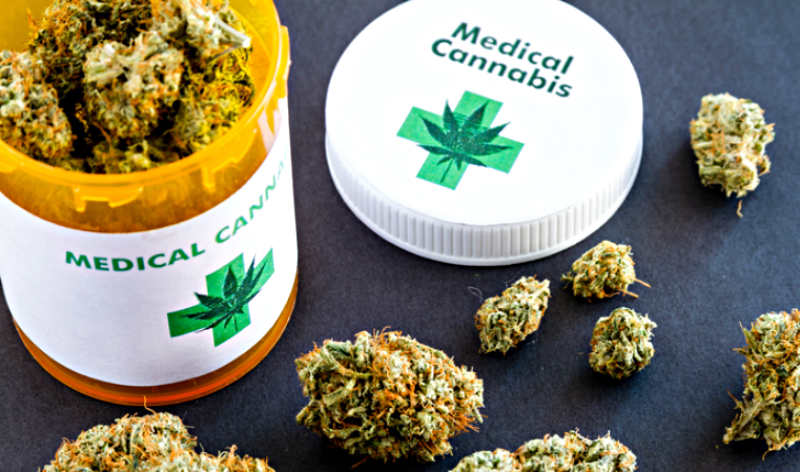Guides
How medical pot made me a better mom
I had a medical marijuana card for nearly two years before I worked up the nerve to buy legal weed. Living in laid-back Vermont, I had access to a friend’s homegrown herb, which my husband used to make me cannabis-infused coconut butter in the family Crock-Pot.
Applying the butter topically soothed my chronic pelvic pain and relieved symptoms of the debilitating bladder syndrome that had plagued me for a decade and warranted the card. Occasionally, I ingested a tiny lick of butter during a flare-up — an imprecise home remedy. I savored the full-body relaxation that followed but loathed the disorienting mental side effects.
I’d been a cannabis skeptic from the start: I never much liked getting high for fun, tending to feel nervous and paranoid rather than happy and chill. I also carried childhood shame about catching my mom smoking a little pipe in secret — the strange pungent smell, her altered state, her mortified reaction when I walked in on her. And I worried that using more cannabis would alter me in turn, distance me from my children and prevent good parenting.
How wrong I was.
It turns out the costs of living with chronic pain and depression are far greater than the risks of using medical marijuana to help those conditions. This past summer, although I was physically pain-free, a sudden depression knocked me to the ground. Crippled by anxiety and insomnia, I struggled to get out of bed and function for my two daughters, ages 10 and 12, who had both experienced some depression themselves. I’d read in Scientific American that mood disorders are passed genetically from mother to daughter, and I feared what my girls would learn from watching me break down in tears or lash out in rage. Even in the fog of despair, I knew taking care of myself was essential to my ability to take care of them.
When my therapist-husband gave me Victoria Costellos memoir, “A Lethal Inheritance: A Mother Uncovers the Science Behind Three Generations of Mental Illness,” I took its message to heart: One of the best things a depressed parent can do to help a child prone to mental illness is to treat her own depression.
So I went to my doctor, but all he could offer was a prescription for Ativan, an anti-anxiety med, and an increase in my antidepressant dosage. I was already going to therapy, practicing yoga and exercising regularly. Rather than become dependent on benzodiazepines or suffer more pharmaceutical side effects, I got out my green card and made an appointment at the local dispensary.
The modest office felt like a hippie health spa, with green-and-white decor and posters displaying different plant strains. My consultant, Mike, quickly put me at ease with his cheerful brown eyes and gentle manner. Clad in jeans and plaid flannel, Mike told me that cannabis had been his “exit drug” from opiates, then listened carefully to my history of chronic pain and depressed mood. He explained the healing properties of endocannabinoids and cited a recent study in which cannabis significantly reduced reports of stress, anxiety and depression, especially in women.
Because I didn’t like to smoke and wanted minimal psychoactive effects, Mike recommended I try microdosing — taking small amounts of cannabis to reap the therapeutic benefits without getting stoned. I took home a tin of indica-dominant buttermints, some salted caramel gummies and a high-CBD oral tincture. (Indica strains of cannabis tend to be more sedating and relaxing; CBD, or cannabidiol, is a nonpsychoactive cannabis compound with anti-inflammatory and pain-relieving properties.) The sativa-strain gummies were strangely activating and made me irritable, but even one tiny buttermint allowed me a blissful night’s sleep. And the oral tincture proved the holy grail — one dropperful to relieve anxiety and sustain a mellow relaxation for hours. Within a week, I felt my depression lighten, and for the first time all summer, I could laugh with my family.
Stigmas and false stereotypes have surrounded marijuana use since the 1930s, when it was classified a federal Schedule 1 substance, like heroin. Maybe because of this disrepute, I never expected the gifts of cannabis to go beyond symptom relief. But I’ve discovered that the plant slows me down and tunes me in, softens my competitive edges. When I microdose, I experience a heightened sense of gratitude and patience, as well as lighthearted humor. Joining the kids on the couch for a love fest with the dog or playing a family game of cards, I feel more present, more grounded in my body, free from mental agitation.
Other mothers have told me they enjoy these benefits too. Jane Lanza, a yoga teacher certified in cannabis science and medicine through the University of Vermont’s Robert Larner, M.D. College of Medicine, says she sees cannabis as a healthier alternative to the socially accepted “wine mom” culture, especially when taken in small amounts.
“The cannabis medicine we use is the feminized version of the plant,” Lanza told me at a canna-wellness retreat I attended with my husband, adding that cannabis growers cull the male plants and use the flowering female plants for the cannabinoids they produce.
“The spirit of healing I receive from medical cannabis is nurturing and supportive,” Lanza said. “It amplifies positive feelings for me, so I experience greater love, patience and compassion when it comes to my kids.”
I hope that, if I speak honestly about my own use, more women will come out of the cannabis closet, a crucial step toward ending the stigma. While I’m grateful for my medical card, I recognize how my white privilege and economic advantages play into my access to cannabis. Marijuana prohibition has racist origins, and the criminalization of cannabis continues to disproportionately affect people of color. According to the American Civil Liberties Union, black people are 3.7 times as likely as whites to be arrested for marijuana. It’s ironic and unjust that many mothers of color are in prison for using the same plant that has benefited me.
Meanwhile, the tide of legalization keeps rising. Although federal law still classifies marijuana as an illegal drug, 10 states plus the District of Columbia have legalized recreational cannabis, while 33 states and the District now allow adult medical use. To our north, Canada just became the first major industrialized nation to fully legalize cannabis.
Clearly, we’re starting to dispel the shame and secrecy around cannabis. That means I don’t have to hide in a backroom with a secret pipe, like my mother did. My daughters see the green, zipped lock-bag where I keep my tinctures and edibles. They know I take the medicine to help with pain, depression and anxiety, and I’ve talked to them about microdosing for symptom relief — using the substance consciously, rather than as a form of escapism. “It’s a healing plant for grown-ups, and for kids with epilepsy,” I say. “But it has negative effects on adolescent brains, so please wait to try it.”
Lanza told me that for cannabis to work therapeutically, it takes an “alchemy of all the right factors” — the right time in your life, plus the right strain, method of ingestion, environment and time of day. All these factors have come together for me in my 40s, and I’m a better mother because of it. Still, I don’t relate to the stoner stereotype. I’ve never been a “wine mom,” and I don”t feel like a “weed mom,” either. I’m ready to embrace a new kind of cannabis culture, free from stigma and judgment, where the plant’s healing benefits are studied and shared, and the medicine is available to all in need.



